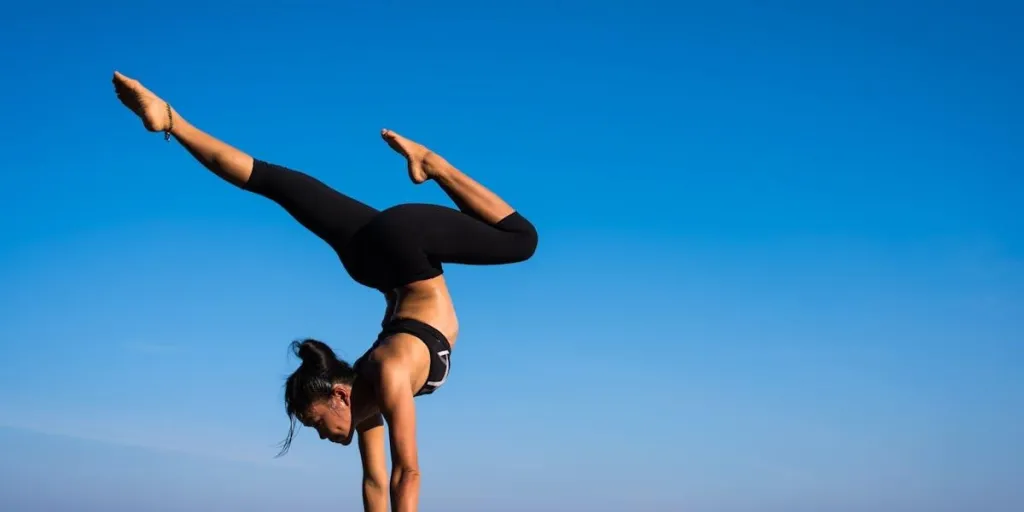Yoga and pilates may seem similar to the untrained eye, and there certainly is a lot of overlap, but their origins are slightly different. For example, yoga is a holistic practice that began in ancient India, while a German anatomist built on those teachings to create pilates in the 20th century. Regardless of their historical differences, both yoga and pilates are well-known for improving health, whether it’s connecting with the body, relieving stress, or building flexibility, strength, and endurance.
This article will explore the differences and similarities between these exercises as well as the kind of benefit their practitioners are most likely to get from them.
Table of Contents
An overview of yoga and its different types
An overview of pilates and its different types
Yoga vs. pilates: Two ways these workouts differ and who they appeal to
Yoga vs. pilates: What equipment is needed for each
Conclusion
An overview of yoga and its different types

Yoga is more than just physical exercise; it’s a 5,000-year-old practice from India that proposes a holistic way of living. The poses, or asanas, are only one part of yoga and are designed to help people relax and meditate for long periods. Yoga has numerous types, including vinyasa, Hatha, yin, Bikram, and even prenatal yoga.
Some types focus more on physical movement, while others are more meditative. However, all of them emphasize linking breath to movement. Yoga is also sometimes conducted in heated rooms to increase the “cleansing” nature of the exercise and help to burn more calories.
A closer look at different types of yoga
1. Iyengar yoga
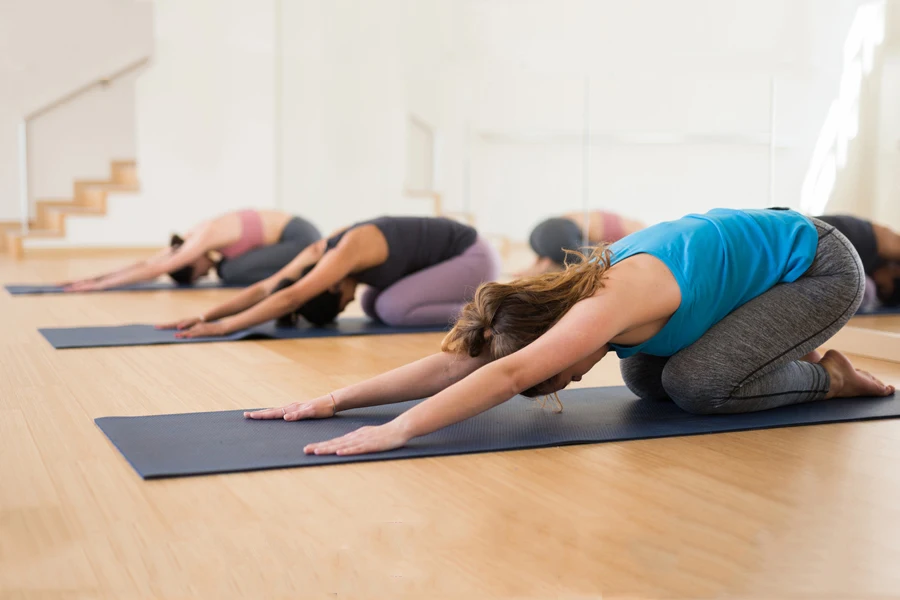
In lyengar yoga, practitioners require props to support their body through each pose. They will hold each pose for a set amount of time before moving to the next, with little flow or transitions between them. The focus is on paying close attention to each pose’s details instead of moving smoothly from one to the next.
2. Hatha yoga
Hatha means “forceful” yoga, though many often misunderstand it as a gentler style. In reality, it encompasses fewer flowing movements and focuses more on floor-based poses.
3. Hot yoga
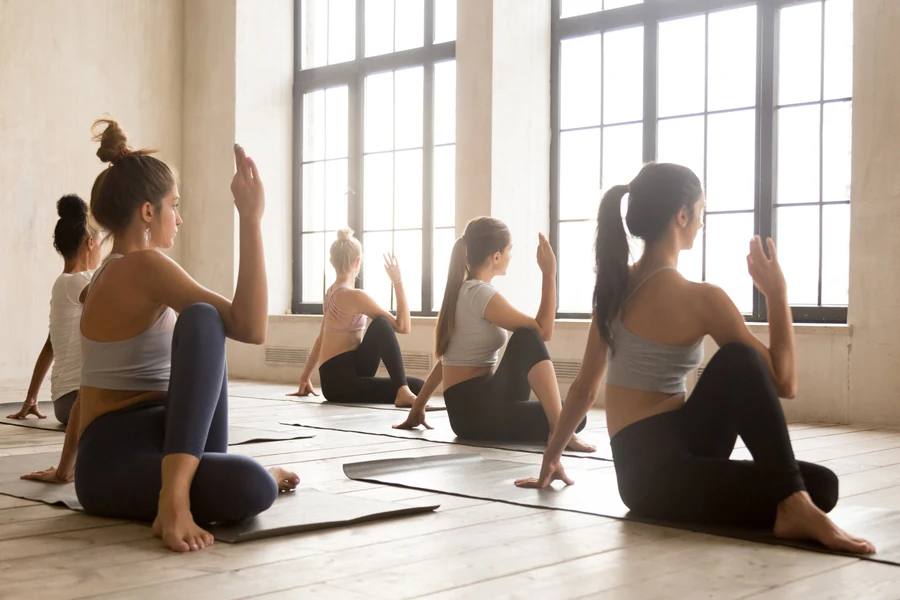
Hot yoga involves holding a series of poses in a room heated to about 40oC. So, practitioners must be ready to sweat – a lot!
4. Yin yoga
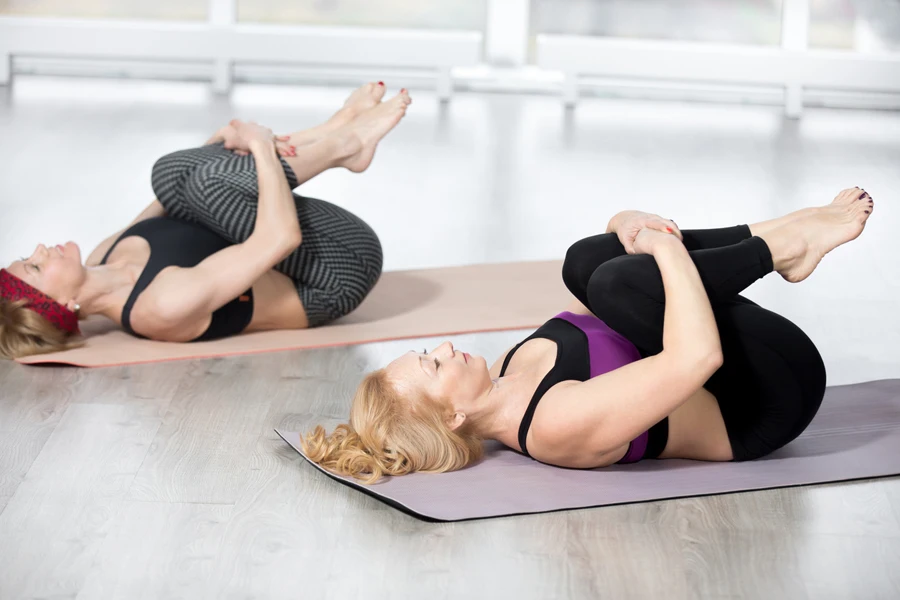
Yin yoga focuses on improving mobility and aiding recovery. In this practice, practitioners hold poses longer to stretch and lengthen the tissues around their muscles. Influenced by Chinese medicine, many believe Yin yoga can activate the body’s meridian lines (or energy channels) to support overall well-being.
5. Ashtanga yoga
Ashtanga yoga is a more fast-paced practice that connects poses through vinyasa, or “steps to a special place.” Practitioners follow specific sequences and only move to the next series after mastering the previous one.
6. Power yoga
Power yoga is inspired by Ashtanga but features more flexibility in its sequences. Challenging poses like arm balances and handstands are often mixed into sessions. Think of it as the “fitness” version of yoga, focusing on strength and endurance.
7. Restorative yoga
Restorative yoga requires props like bolsters, straps, and belts to help support the practitioner while they hold gentle poses for longer periods. The goal is to release muscle tension and help rebuild strength.
An overview of pilates and its different types

Joseph Plates, a German fitness expert, created pilates, originally called Contrology, in the early 20th century. This low-impact exercise improves flexibility, posture, and balance while strengthening muscles. Pilates can target various areas, such as the abs, hips, glutes, and pelvic floor.
What sets pilates apart from yoga is its emphasis on dynamic movement. In pilates, consumers move their arms or legs to prioritize core stabilization and body awareness, helping strengthen muscles without adding bulk. While practitioners can practice pilates on a standard mat, they can add more specialized tools into sessions for an improved workout experience.
A closer look at the different types of pilates
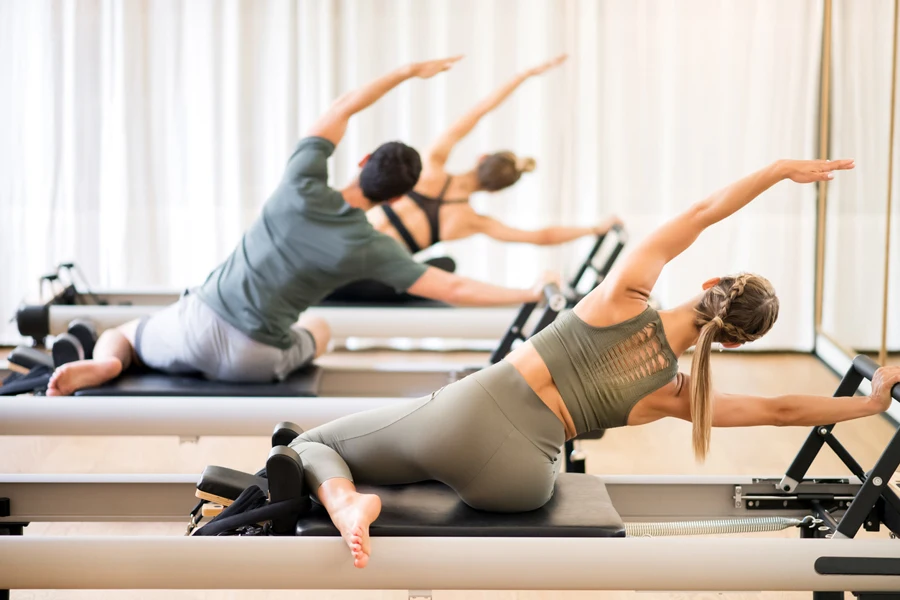
1. Classic pilates
This type of pilates closely follows the original exercises created by Joseph Pilates, blending mat work and equipment. Consumers follow a set sequence of exercises, moving smoothly from one to the next, giving the body a complete range of motion.
2. Modern pilates
Modern pilates blends traditional exercises with more recent knowledge about the body, adapting the original movements to make them more practical and accessible. Usually, instructors utilize various pilates equipment, body weight, resistance, choreography, and other fitness techniques, creating a more dynamic and personalized workout.
Yoga vs. pilates: Two ways these workouts differ and who they appeal to
1. Focus
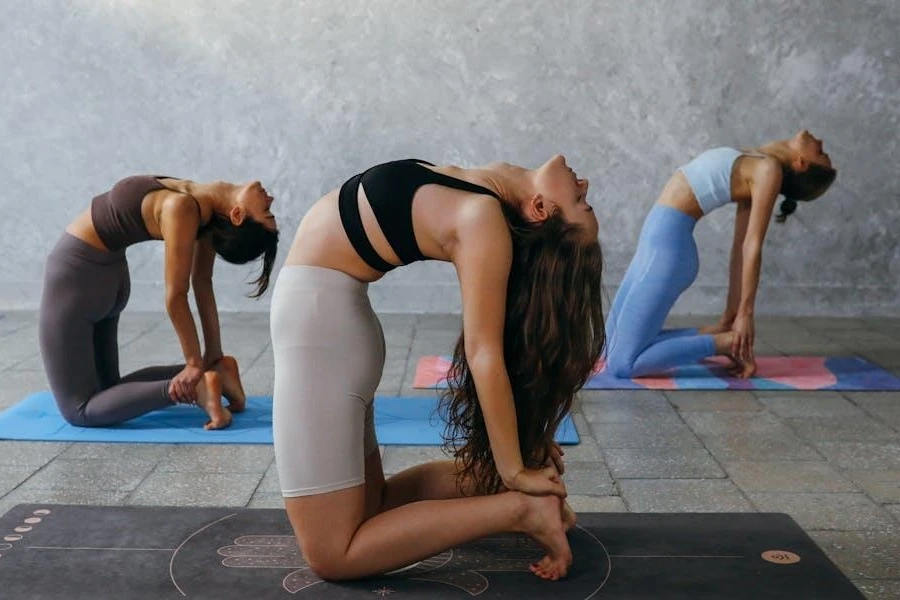
Yoga and pilates both aim to improve health, but as mentioned earlier, they take different paths to do so. Yoga focuses on a more holistic approach, blending physical poses with breathing exercises and meditation to support mindfulness and spiritual growth.
However, pilates is more about strengthening the core and improving posture with controlled, precise movements. While both exercises offer excellent physical benefits, yoga emphasizes the mind-body connection, whereas pilates is more centered on physical fitness and body alignment.
2. Philosophy
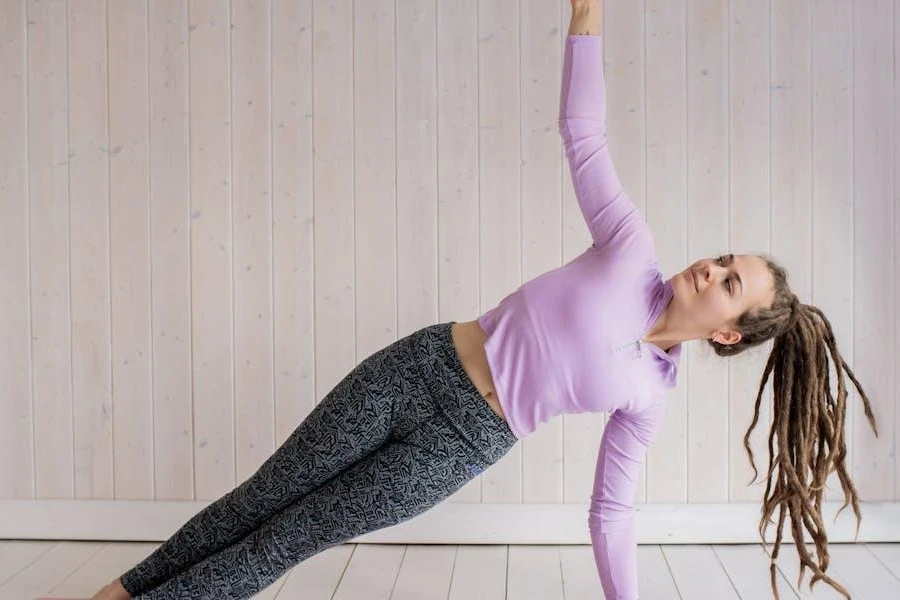
Yoga and pilates come from different backgrounds, which gives them unique philosophies despite their similarities. Yoga is based on ancient Indian spiritual practices, focusing on the connection between mind, body, and spirit, and espouses the nurturing of inner peace, balance, and self-awareness.
Conversely, pilates is a more modern approach emphasizing physical fitness as the key to overall well-being. It appeals to people who prefer focusing on controlled movements and core strength to improve their posture.
Yoga vs. pilates: What equipment is needed for each
While consumers can practice yoga and pilates with minimal equipment, they may decide to invest in a few essential items to enhance their workout. Here’s a closer look at what’s on offer:
5 pieces of (optional) equipment for yoga
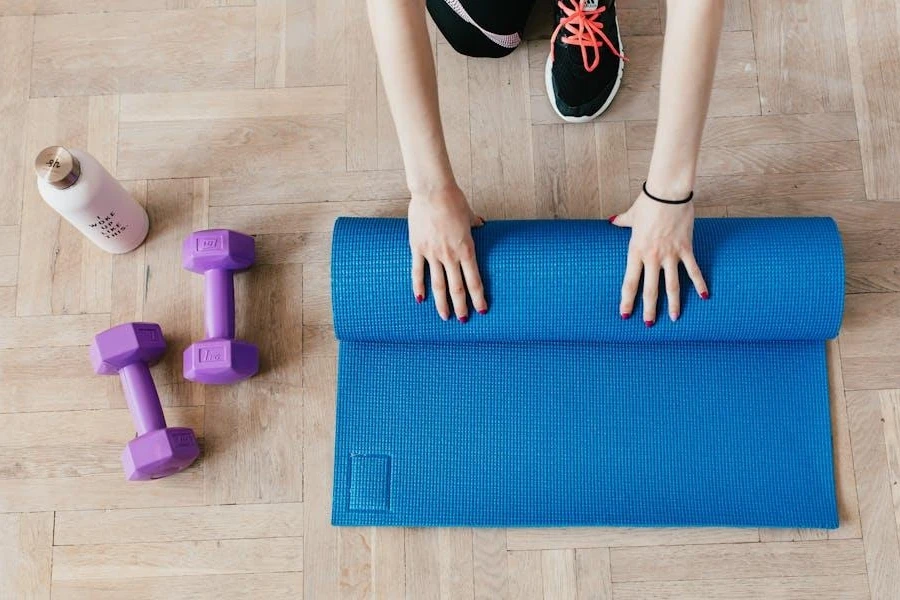
1. Clothing
Consumers don’t need expensive yoga gear to attend a class – just a few basic pieces of exercise clothing will do. Yoga pants, loose joggers, and shorts with a form-fitting top work well. Businesses should consider stocking light, supportive sports bras, hair ties, and optional yoga gear for added comfort.
2. Yoga mats
A yoga mat (or sticky mat) helps users define their spaces while providing added grip to prevent slipping as well as cushioning for hard floors. While gyms and studios often offer mats to use or rent, consumers may want a personal one for hygiene reasons. Businesses should look to offer a range of options based on comfort, durability, and traction.
3. Mat bags or slings
For people who will regularly carry their yoga mats to class, mat bags or slings are a convenient way to do so. These help secure the mat over the shoulder and prevent it from unrolling. While slings are simple and affordable, bags offer extra storage for personal items.
4. Blocks
Yoga blocks may not be necessary, but they are a great way to improve comfort and alignment – especially in standing poses. They help “raise the floor” to meet the practitioner’s hands, preventing misalignment and supporting better posture. Blocks are affordable and come in foam, wood, and cork varieties in various sizes.
5. Straps
Yoga straps (or belts) are great for helping yogis reach their feet in poses with limited flexibility. They act as arm extenders, allowing for proper form without straining.
5 pieces of (optional) equipment for pilates

1. Pilates mat
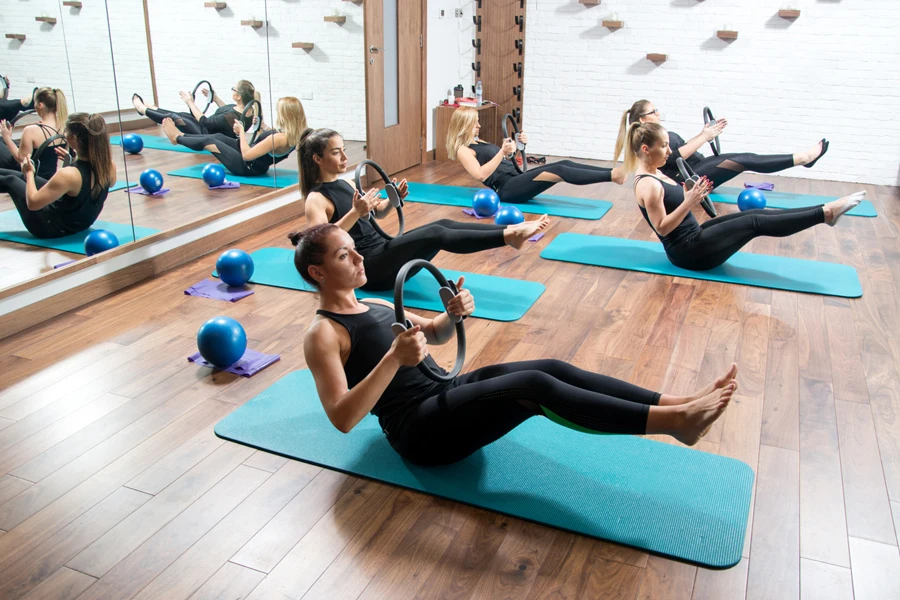
Pilates mats differ from yoga mats in several ways. They are usually thicker, larger, and have smoother surfaces. This helps to support various back or stomach exercises and guide the spine. Pilates mats are designed to handle a variety of techniques, from basic to advanced.
2. Pilates ring
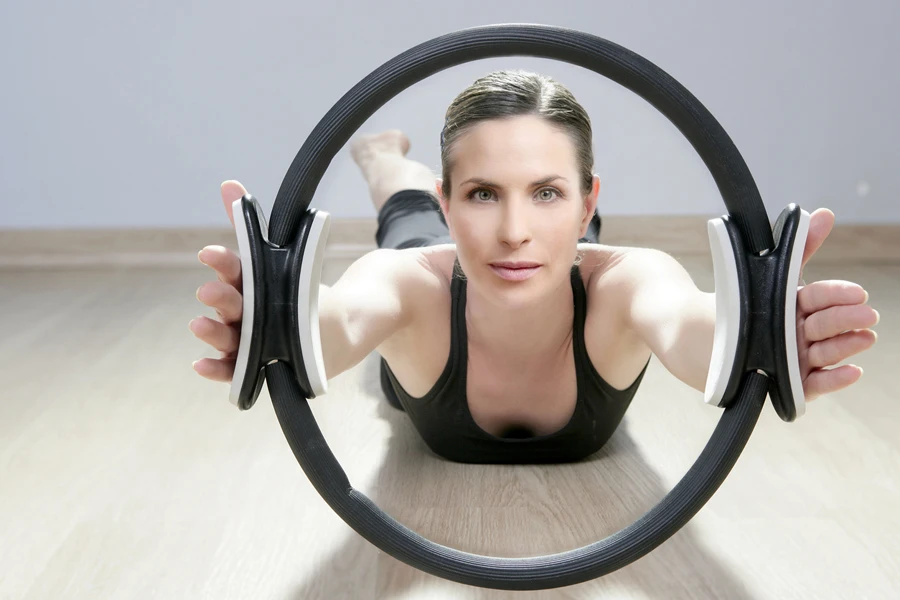
Pilates rings (or “magic circles”) are lightweight circular resistance props used for mat and reformer classes. They provide adjustable resistance to support or challenge exercises such as dead bugs or hip extensions.
3. Resistance bands

Resistance bands are another handy prop that adds resistance to exercises, making them more challenging or supportive. Businesses can stock them in different lengths and resistance levels (light, medium, and heavy). Even better, resistance bands can help improve strength, add variety to consumers’ routines, and provide helpful feedback during workouts.
4. Pilates reformers
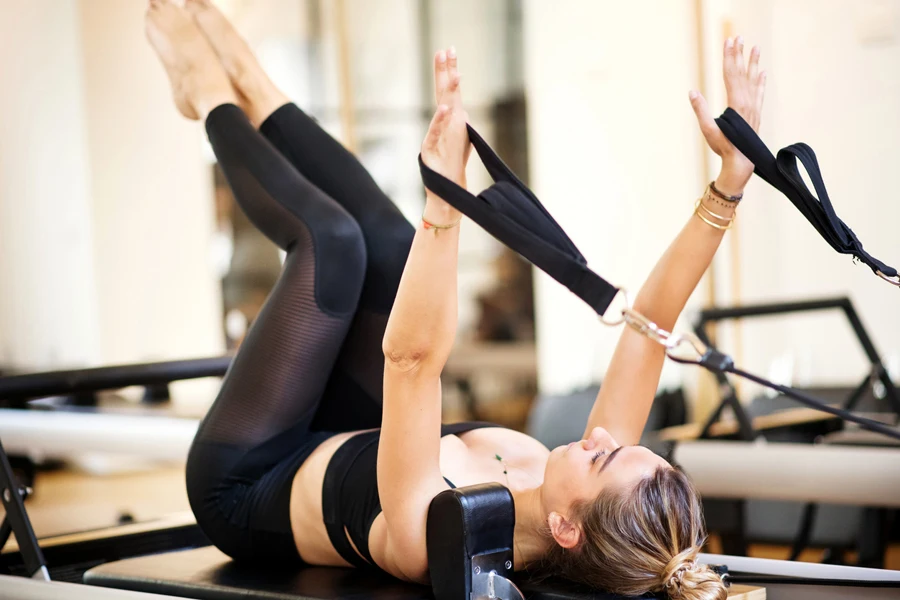
Like mats, reformers are a key piece of some pilates exercises. The equipment features a sliding carriage on a frame with adjustable springs, foot bars, and ropes with handles. They’re versatile enough to help consumers with spine mobility, balance, strength, and flexibility by supporting various exercises in various positions.
5. Foam rollers
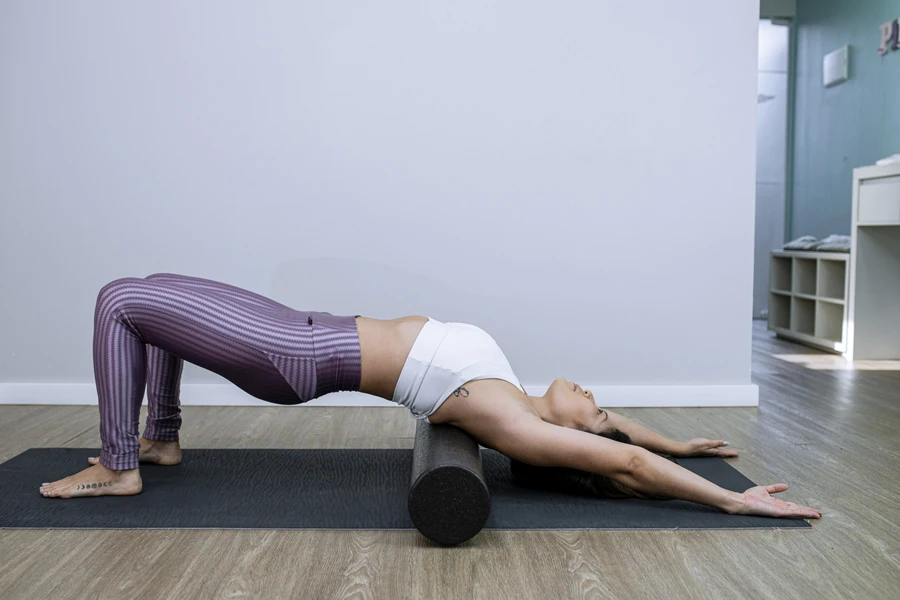
Foam rollers are great for combining self-massage and exercise. These cylindrical foam tubes help relieve muscle tension by applying pressure to specific points, which is excellent for injury prevention and recovery. They are also helpful for various exercises and easing discomfort, such as for sore shoulders or lower back pain.
Conclusion
Yoga and pilates both offer great benefits, but their approaches are pretty different. Those looking for a workout with quick, dynamic movements that focus on building body strength will likely want to try pilates. On the other hand, if they prefer mindful, slower movements and a deeper connection with the body, yoga is more likely better suited to them.
As we’ve seen, there’s a huge range of equipment available for each exercise, so it pays to do some research as to what’s out there so that you can offer your customers the best and most up-to-date technology.
